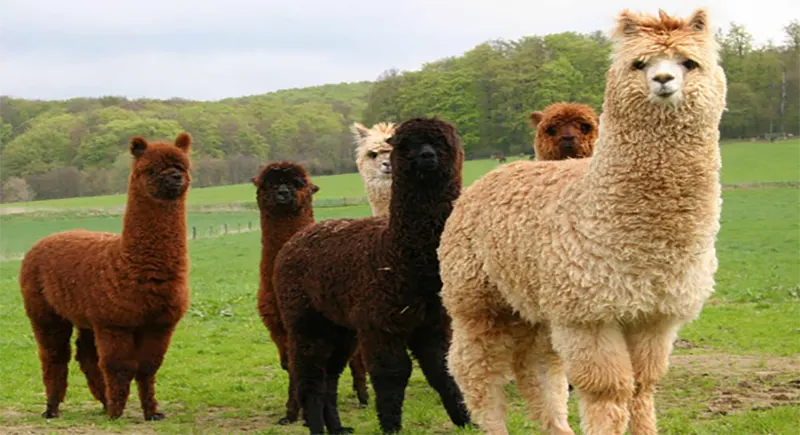In the serene landscapes of the Andes, a unique profession thrives, one that is deeply intertwined with nature of Alpaca Breeders. This vocation, while ancient, has seen a resurgence in recent times, attracting enthusiasts from all corners of the globe. The allure of alpacas, with their gentle demeanor and luxurious fleece, beckons many to delve into this rewarding pursuit.
Understanding the Alpaca
Alpacas, native to the South American highlands, are a species of domesticated camelid. Known for their soft, hypoallergenic fleece, these animals are both a visual and tactile delight. The fleece of an alpaca, often compared to cashmere, is prized for its fineness, warmth, and variety of natural colors.
To the Alpaca Breeder, understanding the intricate details of these animals is paramount. Alpacas are herbivores, primarily grazing on grasses. For those of you who want to buy the Alpaca, you can visit: New Mexico Alpaca Breeders in https://newmexicoalpacabreeders.org. Their three-chambered stomachs efficiently process food, making them low-maintenance grazers. Unlike other livestock, alpacas have a soft-padded foot, which minimizes their impact on the environment, making them an eco-friendly option for sustainable farming.
The Breeding Process
Breeding alpacas is both an art and a science. An Alpaca Breeder must possess a deep knowledge of genetics, health, and behavior to produce high-quality offspring. The breeding process begins with the selection of superior breeding stock. Traits such as fleece quality, conformation, and temperament are meticulously evaluated.
Mating season, typically aligned with the animal’s natural reproductive cycle, is a critical period. Female alpacas, known as hembras, have a unique reproductive system; they are induced ovulators, meaning ovulation is triggered by mating. This trait allows for some flexibility in breeding schedules, providing the Alpaca Breeder with opportunities to optimize mating for desirable traits.
Gestation lasts around 11 to 12 months, culminating in the birth of a single cria, or baby alpaca. Twin births are rare and often pose complications. Post-birth, the cria stands and nurses within hours, a testament to the resilience of these remarkable animals.
Health and Care
A successful Alpaca Breeder must prioritize the health and well-being of their herd. Alpacas are generally hardy, but they are susceptible to certain health issues, such as parasites, dental problems, and nutritional deficiencies. Regular health checks, proper vaccination, and a balanced diet are essential.
Parasite control is particularly crucial. Alpacas can suffer from internal and external parasites, which can lead to severe health issues if not managed properly. The Alpaca Breeder must implement a rigorous parasite management program, often involving regular fecal tests and appropriate deworming strategies.
Dental care is another vital aspect. Alpacas have continuously growing teeth that require regular trimming. Malocclusions, where teeth do not align properly, can cause feeding difficulties and must be addressed promptly.
Fleece Harvesting and Utilization
One of the primary reasons individuals become an Alpaca Breeder is the allure of alpaca fleece. Shorn annually, usually in the spring, this fleece is a valuable commodity. The shearing process, though straightforward, requires skill to ensure the animal’s comfort and to maximize fleece quality.
The harvested fleece is then sorted and graded based on fineness, length, and color. This raw fleece undergoes further processing to produce yarn, felt, and other textile products. Alpaca fleece’s hypoallergenic properties and lack of lanolin make it suitable for people with sensitive skin.
The fleece industry offers numerous opportunities for breeders. From hand-spinning enthusiasts to high-end fashion designers, there is a growing market for alpaca products. An astute Alpaca Breeder can tap into these markets, adding a profitable dimension to their breeding operation.
Economic and Environmental Impact
Engaging in alpaca breeding is not just about producing fleece or livestock; it also carries significant economic and environmental implications. For rural communities, particularly in developing regions, alpaca breeding can provide a sustainable source of income. The sale of fleece, breeding stock, and alpaca-related products can significantly contribute to the local economy.
Environmentally, alpacas are advantageous livestock. Their grazing habits and soft-footed nature reduce soil erosion and promote sustainable land use. For the environmentally conscious Alpaca Breeder, this aspect is a compelling reason to invest in alpaca farming.
Challenges and Rewards
Like any agricultural pursuit, alpaca breeding comes with its set of challenges. The Alpaca Breeder must navigate issues such as market fluctuations, health management, and genetic diversity. The initial investment in quality breeding stock and infrastructure can be substantial, requiring careful financial planning.
However, the rewards often outweigh these challenges. The bond formed with these intelligent and gentle animals is deeply fulfilling. The sight of a healthy cria taking its first steps or the feel of freshly shorn fleece is immensely satisfying. Furthermore, the opportunity to contribute to the preservation and improvement of this ancient breed adds a sense of purpose and legacy to the Alpaca Breeder’s work.
Conclusion
The role of an Alpaca Breeder is a unique blend of tradition, science, and passion. To know more information about Alpaca Breeder, You can visit: https://newmexicoalpacabreeders.org. For those drawn to the tranquil yet rewarding life of alpaca breeding, the journey is filled with learning, growth, and the unmatched joy of working closely with these remarkable animals. As the world continues to value sustainable and ethical farming practices, the Alpaca Breeder stands as a guardian of an ancient heritage, while also paving the way for a vibrant and prosperous future.










